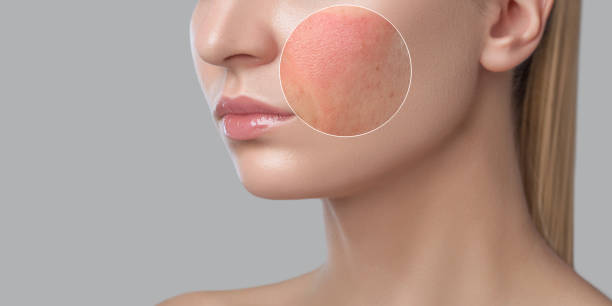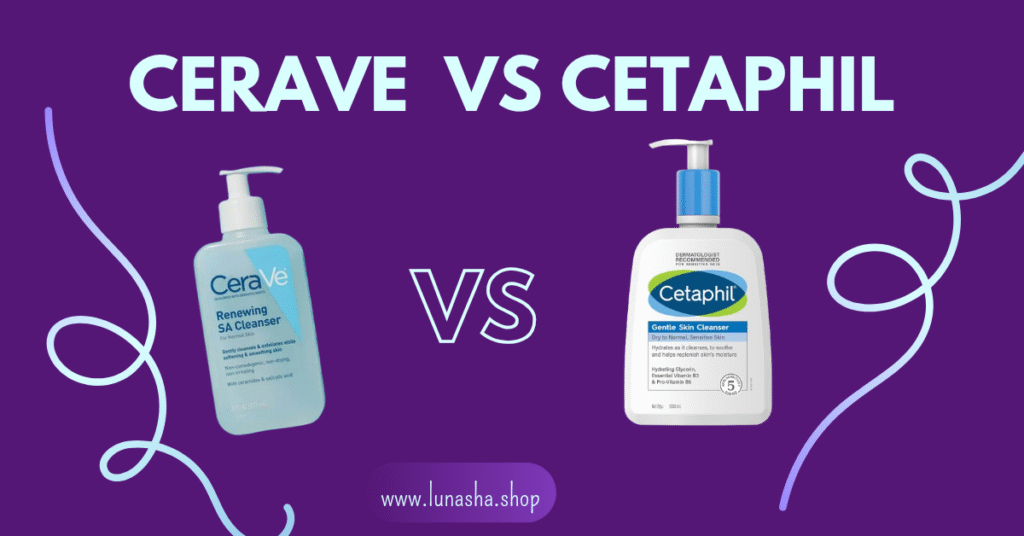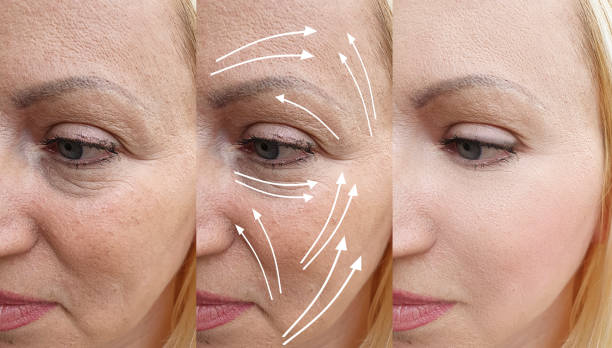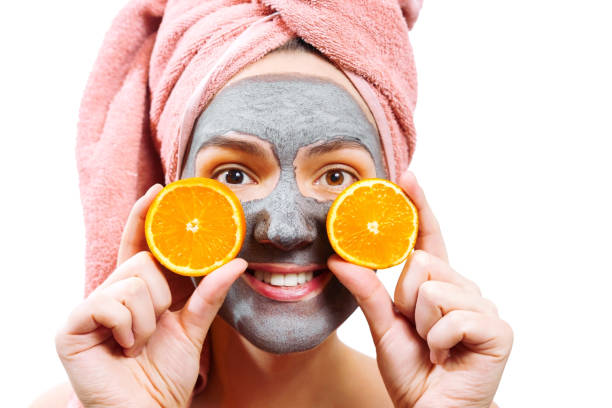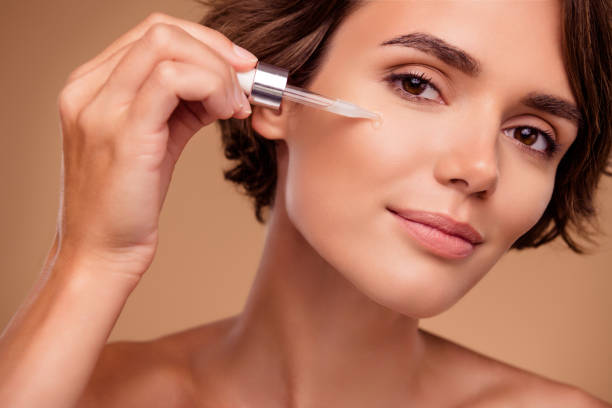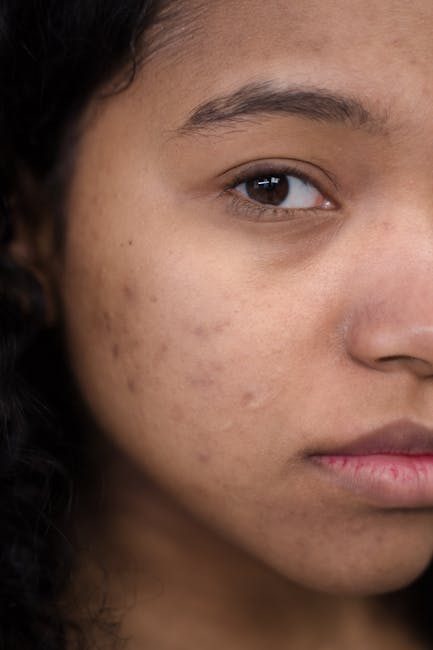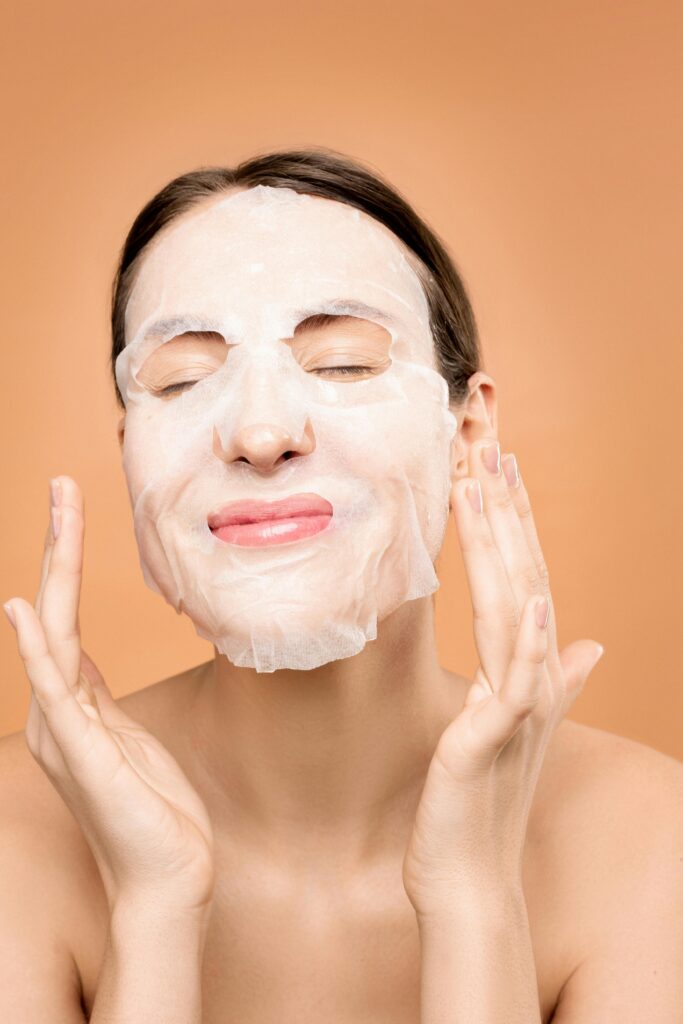How to Remove Acne Scars Naturally in 7 days
I’ll be honest with you – three months ago, I was standing in my bathroom mirror at 2 AM, tracing every single acne scar on my face with my finger. The frustration was eating me alive. After spending hundreds of dollars on expensive treatments that promised miraculous results, I felt like giving up entirely.
But here’s the thing about rock bottom – it gives you a solid foundation to build from. My journey to remove acne scars naturally started with desperation, but it led me to discover some incredibly effective methods that actually work. And the best part? Most of these natural remedies are probably sitting in your kitchen right now.
Let me share everything I learned during my transformation, including the mistakes I made, the breakthrough moments, and the exact routine that helped me see visible improvements in just one week.
Understanding What Acne Scars Really Are (And Why This Matters)
Before diving into the solutions, I had to understand what I was dealing with. Acne scars aren’t just “marks” – they’re actual changes in your skin’s structure. When I finally grasped this concept, everything clicked.
Acne scars form when inflammatory acne damages the skin tissue. Your body tries to heal the damage by producing collagen, but sometimes it produces too much or too little. This creates different types of scars that require different approaches.
There are three main types I discovered during my research phase. Ice pick scars are deep, narrow, and look like small holes in your skin – these were my biggest nemesis. Boxcar scars are wider with defined edges, kinda like chickenpox scars. Rolling scars create a wave-like appearance across your skin.
Understanding these differences completely changed my approach. Instead of using the same treatment for everything, I started targeting each type specifically. This is where most people go wrong – they try a one-size-fits-all solution and wonder why nothing works.
The Different Types of Acne Scars I Battled
My face was basically a textbook example of all three types. The ice pick scars on my cheeks were the worst – they looked like someone had taken a tiny ice pick and jabbed my skin repeatedly. No amount of concealer could hide them.
The boxcar scars around my jawline were wider but not as deep. These actually responded better to natural treatments than the ice picks did. Rolling scars covered most of my forehead, creating this uneven texture that made me avoid certain lighting like the plague.
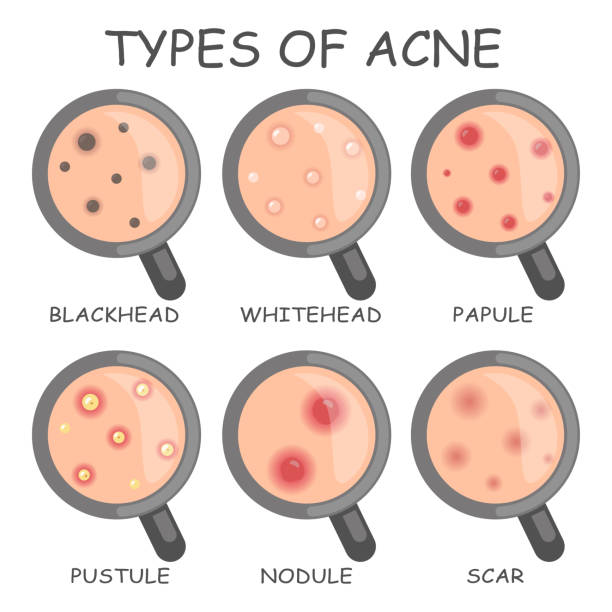
What I learned is that newer scars (less than a year old) respond much better to natural treatments than older ones. My acne had been cleared up for about six months when I started this journey, which put me in a good position for natural healing.
The key insight here is that different scar types need different approaches. You can’t just slap some lemon juice on everything and expect miracles. Trust me, I tried that approach first, and it was a disaster.
What Natural Remedies Actually Work (Based on Science and Experience)
After countless hours of research and trial and error, I discovered that certain natural ingredients have legitimate scientific backing for scar reduction. The game-changer for me was understanding which ingredients actually penetrate the skin and which ones are just Instagram hype.
Rosehip oil became my holy grail. This stuff is packed with vitamin A and C, plus essential fatty acids that help regenerate skin cells. I started applying it twice daily, and within a week, I noticed my skin looked more hydrated and the shallow scars seemed less prominent.
Apple cider vinegar was another winner, but you have to be careful with this one. I diluted it 1:3 with water – any stronger and you risk chemical burns. The acid helps with gentle exfoliation and can lighten hyperpigmentation over time.
Aloe vera gel straight from the plant worked wonders for inflammation. I kept an aloe plant on my windowsill and would break off a piece every morning. The fresh gel helped soothe my skin and provided the moisture barrier needed for healing.
Honey, specifically raw manuka honey, surprised me with its effectiveness. The antimicrobial properties helped prevent new breakouts while I was treating existing scars. Plus, it’s gentle enough to use daily without irritation.
Why I Chose This Natural Approach Over Expensive Treatments
Let me tell you about my expensive treatment disasters first. I spent $300 on a chemical peel that left my skin red and inflamed for two weeks. The results? Minimal improvement and a whole lot of regret.
Then there was the laser consultation where they quoted me $2,000 for a series of treatments. As a college student working part-time, that might as well have been a million dollars. But honestly, even if I had the money, the idea of more potential side effects scared me.
The turning point came when I realized that my skin had been healing itself my entire life. Why couldn’t it heal these scars with the right support? Natural ingredients work with your skin’s natural healing processes instead of forcing dramatic changes.
Plus, the accessibility factor was huge. I could start immediately with ingredients from my local grocery store. No waiting for appointments, no scheduling around healing time, no explaining to my boss why my face looked like a tomato.
The gentle approach also meant I could maintain my regular routine. I didn’t have to hide from the sun for weeks or deal with the social anxiety of explaining my “procedure face” to everyone.
My Intensive 7-Day Natural Scar Removal Protocol
This is the exact routine that gave me visible results in just one week. I’m not saying my scars disappeared completely – that would be unrealistic. But the improvement was noticeable enough that my roommate asked if I’d been using a new filter on my selfies.
Day 1-2: The Foundation Phase I started with gentle exfoliation using a mixture of honey and fine sea salt. The key here is “gentle” – I learned this the hard way after scrubbing too aggressively on day one and making everything worse. Mix one tablespoon of raw honey with half a teaspoon of fine sea salt, massage gently for 30 seconds, then rinse with lukewarm water.
After exfoliation, I applied a thin layer of aloe vera gel and let it absorb for 10 minutes. Then came the rosehip oil – just 3-4 drops massaged into the scarred areas. The oil felt heavy at first, but my skin drank it up within an hour.
Day 3-4: Intensifying the Treatment I introduced diluted apple cider vinegar as a toner. Mixed 1 part ACV with 3 parts water, applied with a cotton pad, waited 5 minutes, then rinsed. This step was crucial for evening out my skin tone and creating the right pH environment for healing.
The honey masks became daily 20-minute treatments. I’d spread raw manuka honey over the scarred areas and relax while it worked its magic. The antimicrobial properties helped prevent new breakouts while supporting the healing process.
Day 5-7: The Intensive Phase I added turmeric paste to my routine. Mixed half a teaspoon of turmeric powder with enough water to make a paste, applied to scars, left for 15 minutes, then gently scrubbed off. Warning: this will temporarily stain your skin yellow, so do it before bed.
The final addition was vitamin E oil from capsules. I’d pierce a capsule and apply the oil directly to the deepest scars before bed. This provided intense moisture and antioxidants for overnight healing.
My Realistic Results After One Week
Let me be completely transparent about what happened. My ice pick scars didn’t magically disappear – anyone promising that is lying to you. But they did become less noticeable, and the surrounding skin looked healthier and more even.
The boxcar scars showed the most improvement. They appeared shallower and less defined. The rolling scars on my forehead became smoother, and the overall texture of my skin improved dramatically.

What surprised me most was how much brighter my skin looked. The natural ingredients had given me this healthy glow that I hadn’t seen in years. My complexion was more even, and the hyperpigmentation from old acne was noticeably lighter.
The inflammation around existing scars reduced significantly. This made them less red and angry-looking, which automatically made them less noticeable. Sometimes the appearance of scars is as much about inflammation as it is about the actual texture.
The Honest Truth About Natural Scar Removal
Here’s what nobody wants to tell you: natural scar removal takes time, patience, and realistic expectations. One week can show you promising results, but significant improvement takes months of consistent treatment.
The advantage of natural methods is that they’re gentle and sustainable. You can continue these treatments long-term without worrying about side effects or dependency. Your skin gradually improves over time rather than experiencing dramatic changes that might not last.
Some scars will always be more responsive than others. Newer scars, shallow scars, and pigmentation issues respond better to natural treatments than deep, established scars. But even the stubborn ones can improve with consistent care.
Natural treatments work best when combined with a healthy lifestyle. Drinking plenty of water, getting enough sleep, managing stress, and eating a balanced diet all support your skin’s healing process from the inside out.
Advanced Natural Techniques That Accelerated My Results
After seeing initial success, I researched more advanced natural techniques that could boost my results. Face massage became a game-changer for improving circulation and helping products penetrate deeper.
I learned a specific massage technique using jade roller and my fingers. Starting from the center of my face, I’d massage outward in circular motions, focusing extra attention on scarred areas. This increased blood flow and helped the healing ingredients work more effectively.
DIY microneedling with a 0.5mm derma roller became part of my weekly routine. This stimulates collagen production naturally and helps products absorb better. I was nervous about this at first, but when done correctly, it’s safe and effective.
Creating custom face masks by mixing multiple ingredients amplified the results. My favorite combination was honey, turmeric, and aloe vera gel. The synergistic effect of multiple healing ingredients working together was more powerful than using them separately.
Who Should (And Shouldn’t) Use Natural Acne Scar Treatments
Natural treatments aren’t for everyone, and I learned this through some uncomfortable trial and error. If you have active acne, focus on clearing that first before treating scars. I made the mistake of trying to do both simultaneously and ended up irritating my skin.
People with sensitive skin need to be extra cautious. Always patch test new ingredients on a small area first. I learned this lesson when I used undiluted lemon juice and ended up with a chemical burn that took weeks to heal.
Those with very deep, old scars might need to combine natural treatments with professional procedures for optimal results. Natural methods can improve the appearance and prevent new scars, but they have limitations for severe scarring.
If you have keloid scars or a tendency to develop them, consult a dermatologist before trying any scar treatments. These types of scars can actually get worse with certain treatments, even natural ones.
Pregnant or breastfeeding women should avoid certain ingredients like retinol alternatives and some essential oils. Always research the safety of each ingredient for your specific situation.
People taking certain medications or with specific health conditions should consult their healthcare provider. Some natural ingredients can interact with medications or aggravate certain conditions.
Where to Source Quality Natural Ingredients and Current Recommendations
Finding quality natural ingredients made a huge difference in my results. Not all products are created equal, and I learned that the source and processing method matter significantly.
For rosehip oil, I recommend cold-pressed, organic versions. I found mine at a local health food store, but you can also order online. Look for dark glass bottles to preserve the oil’s potency. Expect to pay $15-25 for a quality 1-ounce bottle.
Raw manuka honey is worth the investment. It’s more expensive than regular honey, but the antimicrobial properties are significantly higher. I order mine online from New Zealand suppliers for about $30-40 for a small jar.
Apple cider vinegar should be organic with “the mother” – those cloudy strands that contain beneficial bacteria. Bragg’s is a popular brand that’s widely available. A bottle costs around $5-8 and lasts for months.
For aloe vera, fresh is best if you can manage it. An aloe plant costs about $10-15 and provides a continuous supply of fresh gel. If you can’t keep a plant, look for pure aloe vera gel with minimal additives.
Essential oils should be therapeutic grade from reputable suppliers. I avoid anything from general retailers and stick to companies that specialize in aromatherapy. Quality oils cost more upfront but are more effective and last longer.
Creating Your Own Natural Scar-Fighting Routine
Based on my experience, here’s how to create an effective routine that fits your lifestyle and budget. Start slowly and build up gradually – your skin needs time to adjust to new ingredients.
Morning Routine:
- Gentle cleanser (honey and water mixture)
- Diluted apple cider vinegar toner
- Vitamin C serum (or fresh lemon juice diluted 1:4 with water)
- Aloe vera gel
- Rosehip oil (2-3 drops)
- Sunscreen (non-negotiable!)
Evening Routine:
- Double cleanse if wearing makeup
- Honey mask (2-3 times per week)
- Turmeric paste (once per week)
- Vitamin E oil on specific scars
- Heavier moisturizer if needed
Weekly Treatments:
- Gentle exfoliation with honey and sea salt
- Face massage with jade roller
- DIY microneedling (if comfortable)
- Overnight mask with honey and aloe
The key is consistency rather than perfection. Missing a day won’t ruin your progress, but skipping weeks will slow your results. Find a routine that feels sustainable for your lifestyle.
My Top Mistakes to Avoid (Learn from My Fails)
Let me save you from the painful lessons I learned the hard way. These mistakes set back my progress and caused unnecessary skin damage.
The Lemon Juice Disaster: I thought more acid meant faster results. Wrong! Undiluted lemon juice gave me chemical burns that took weeks to heal. Always dilute citrus juices and never use them before sun exposure.

Over-exfoliation Hell: In my eagerness to see results, I exfoliated daily with harsh scrubs. This damaged my skin barrier and made scars look worse. Stick to gentle exfoliation 2-3 times per week maximum.
The Mixing Mistake: I thought combining multiple active ingredients would speed up results. Instead, I created irritating combinations that inflamed my skin. Introduce one new ingredient at a time and wait at least a week before adding another.
Ignoring Patch Tests: I applied new ingredients directly to my face without testing them first. This led to several allergic reactions that could have been avoided with simple patch testing on my inner arm.
Unrealistic Expectations: I expected dramatic results in days and got discouraged when they didn’t happen. Natural healing takes time, and patience is crucial for success.
The Emotional Journey of Scar Healing
Nobody talks about the emotional roller coaster of treating acne scars. The process isn’t just physical – it’s deeply psychological and can affect your self-esteem and confidence.
I remember feeling hopeful the first few days, then discouraged when I didn’t see immediate dramatic changes. The key was learning to celebrate small improvements and trust the process.
Taking progress photos helped me see changes that weren’t obvious in the mirror. Sometimes we’re too close to our own faces to notice gradual improvements. Photos don’t lie, and they helped me stay motivated during slower progress periods.
The routine itself became therapeutic. Having a structured skincare ritual gave me a sense of control and purpose. Instead of just lamenting my scars, I was actively working to improve them.
Building a support system was crucial. Whether it’s online communities, friends who understand, or family members who encourage you, having people who support your journey makes a huge difference.
Maintaining Your Results Long-Term
Once you start seeing improvements, maintaining them becomes the next challenge. Natural scar treatment isn’t a one-and-done process – it requires ongoing commitment.
I developed a maintenance routine that’s less intensive but consistent. Instead of daily treatments, I do intensive treatments 2-3 times per week and maintain with gentler daily care.
Sun protection became non-negotiable. UV exposure can darken scars and undo months of progress. I use SPF 30 minimum every day, even indoors, and reapply when outside.
Regular exfoliation remains important for preventing new scars and maintaining skin texture. I stick to gentle methods like honey scrubs or soft washcloths rather than harsh chemical exfoliants.
Stress management plays a bigger role than I initially realized. High stress can trigger breakouts and slow healing. I incorporated meditation, exercise, and better sleep habits into my routine.
The Science Behind Why These Methods Work
Understanding the science behind natural scar treatments helped me stick with the routine when results seemed slow. Each ingredient works through specific mechanisms that support skin healing.
Rosehip oil contains trans-retinoic acid, a natural form of vitamin A that promotes cell turnover and collagen production. This is why it’s effective for both acne scars and anti-aging.
Honey’s antimicrobial properties come from hydrogen peroxide production and low pH. It also contains nutrients that support wound healing and reduce inflammation.
Apple cider vinegar’s acetic acid helps with gentle exfoliation and pH balance. The “mother” contains beneficial bacteria that can support the skin’s microbiome.
Aloe vera contains compounds like acemannan that stimulate collagen synthesis and reduce inflammation. It also provides moisture without clogging pores.
Turmeric’s curcumin is a powerful anti-inflammatory that can reduce redness and support healing. It also has mild antiseptic properties.
Understanding these mechanisms helped me be more patient with the process and trust that the ingredients were working even when I couldn’t see immediate results.
Final Thoughts and My Ongoing Journey
Six months later, I’m still following a modified version of this routine. My scars haven’t completely disappeared, but they’re significantly less noticeable, and my overall skin health has improved dramatically.
The natural approach taught me to work with my skin rather than against it. Instead of trying to force dramatic changes, I learned to support my skin’s natural healing processes.
My confidence has improved not just because of the physical changes, but because I learned to take control of my skin health. Having a routine that works gives you a sense of empowerment that goes beyond appearance.
The most important lesson I learned is that perfection isn’t the goal – improvement is. Every small step forward is worth celebrating, and consistency beats intensity every time.
I still have days when I notice my scars more than others, but they no longer define how I feel about myself. The journey of healing them taught me patience, self-care, and the power of natural ingredients.
If you’re starting this journey, remember that everyone’s skin is different. What worked for me might need to be adjusted for your specific situation. Be patient with yourself, celebrate small victories, and trust the process.
Your scars don’t define you, but taking care of them can be an act of self-love that extends far beyond your appearance. The routine, the patience, and the commitment to yourself are all part of a larger journey toward self-acceptance and confidence.
Frequently Asked Questions About Natural Acne Scar Removal
Q: Can acne scars really be removed in just one week? A: While significant improvement can be seen in a week, complete scar removal takes months of consistent treatment. One week can show promising results like reduced inflammation, improved skin texture, and lighter pigmentation, but deep structural changes require longer-term commitment.
Q: Are natural treatments as effective as professional procedures? A: Natural treatments work best for mild to moderate scarring and newer scars. They’re gentler and more sustainable but may not provide the dramatic results of professional procedures for severe scarring. Many people combine both approaches for optimal results.
Q: Is it safe to use multiple natural ingredients together? A: It’s best to introduce one ingredient at a time and wait at least a week before adding another. Some combinations can be irritating or cause sensitivity. Always patch test new ingredients and start with lower concentrations.
Q: How long should I continue natural treatments? A: Natural scar treatments work best as long-term, sustainable routines rather than short-term fixes. Most people see initial results in 2-4 weeks, with significant improvement after 3-6 months of consistent use.
Q: Can natural treatments make acne scars worse? A: When used correctly, natural treatments are generally safe. However, over-exfoliation, using ingredients too concentrated, or not patch testing can cause irritation that makes scars appear worse temporarily.
Q: What’s the difference between acne scars and acne marks? A: Acne marks are flat, pigmented spots that fade over time. Acne scars involve changes in skin texture – either raised or depressed areas. Natural treatments work better for marks and shallow scars than deep, established scarring.
Q: Should I stop using natural treatments if I see initial improvement? A: No, consistency is key with natural treatments. Stopping too early often leads to regression. Once you achieve your desired results, you can reduce frequency but should maintain some level of treatment for lasting results.
Q: Can I use natural scar treatments if I have sensitive skin? A: Yes, but proceed with extra caution. Start with the gentlest ingredients like aloe vera and honey. Always patch test, use lower concentrations, and avoid ingredients known to cause sensitivity in your skin type.
Q: Are there any natural ingredients I should avoid? A: Avoid undiluted citrus juices, baking soda, and harsh scrubs. Be cautious with essential oils and always dilute them properly. If you have specific allergies or sensitivities, research each ingredient thoroughly before use.
Q: How do I know if my scars are improving? A: Take progress photos in consistent lighting to track changes. Look for reduced redness, improved skin texture, lighter pigmentation, and overall healthier-looking skin. Improvements are often gradual and easier to see in photos than in the mirror.
CeraVe vs Cetaphil: My 2-Year Journey Testing Both Brands (And Why I’ll Never Go Back)
The Great Skincare Debate That Changed My Life Picture this: I’m standing in the skincare…
Anti-Aging Supplements: My Journey Through the Fountain of Youth in a Bottle
I’ll be honest with you – I never thought I’d be the type of person…
Dermatologist’s Secret: Why Your Anti-Aging Routine Isn’t Working
Dermatologist’s Secret: Why Your Anti-Aging Routine Isn’t Working I remember staring at my reflection in…
Can Niacinamide Cause Acne? The Truth About This Popular Skincare Ingredient
The Day My “Miracle” Serum Betrayed Me Three years ago, I was standing in my…
My Journey with Moderate Acne Scars: Prevention, Treatment, and Hard-Learned Lessons
Moderate acne scars prevention The Day I Realized My Scars Weren’t Going Away on Their…
I Tested Paula’s Choice BHA for Acne Scars – 3 Month Results
Introduction Let me be honest with you right off the bat – I was that…

